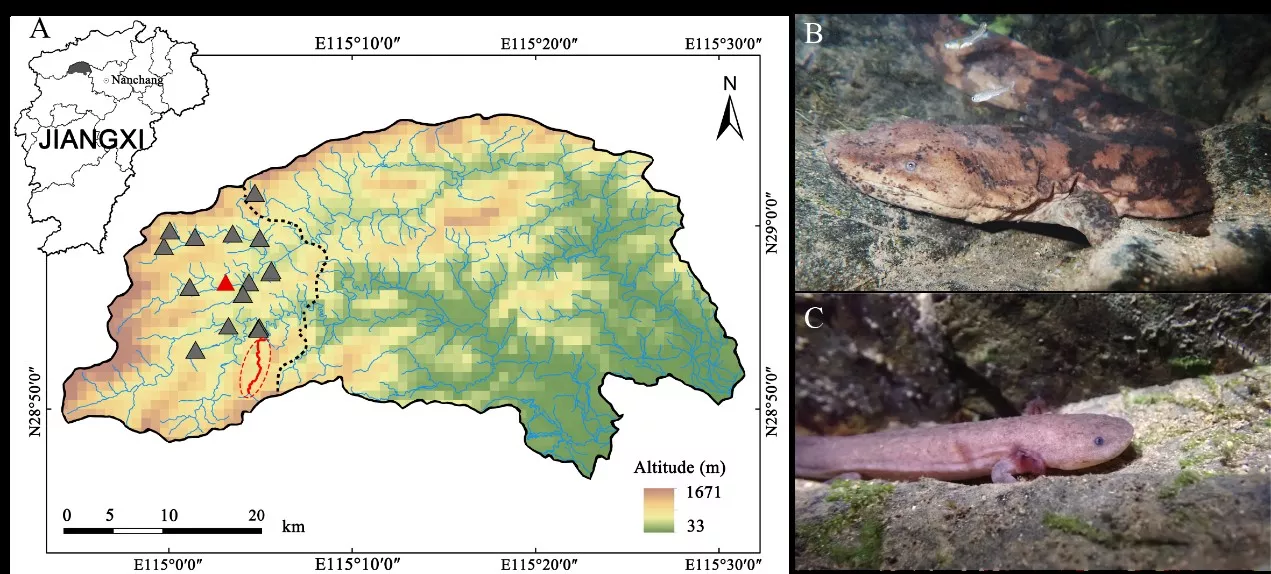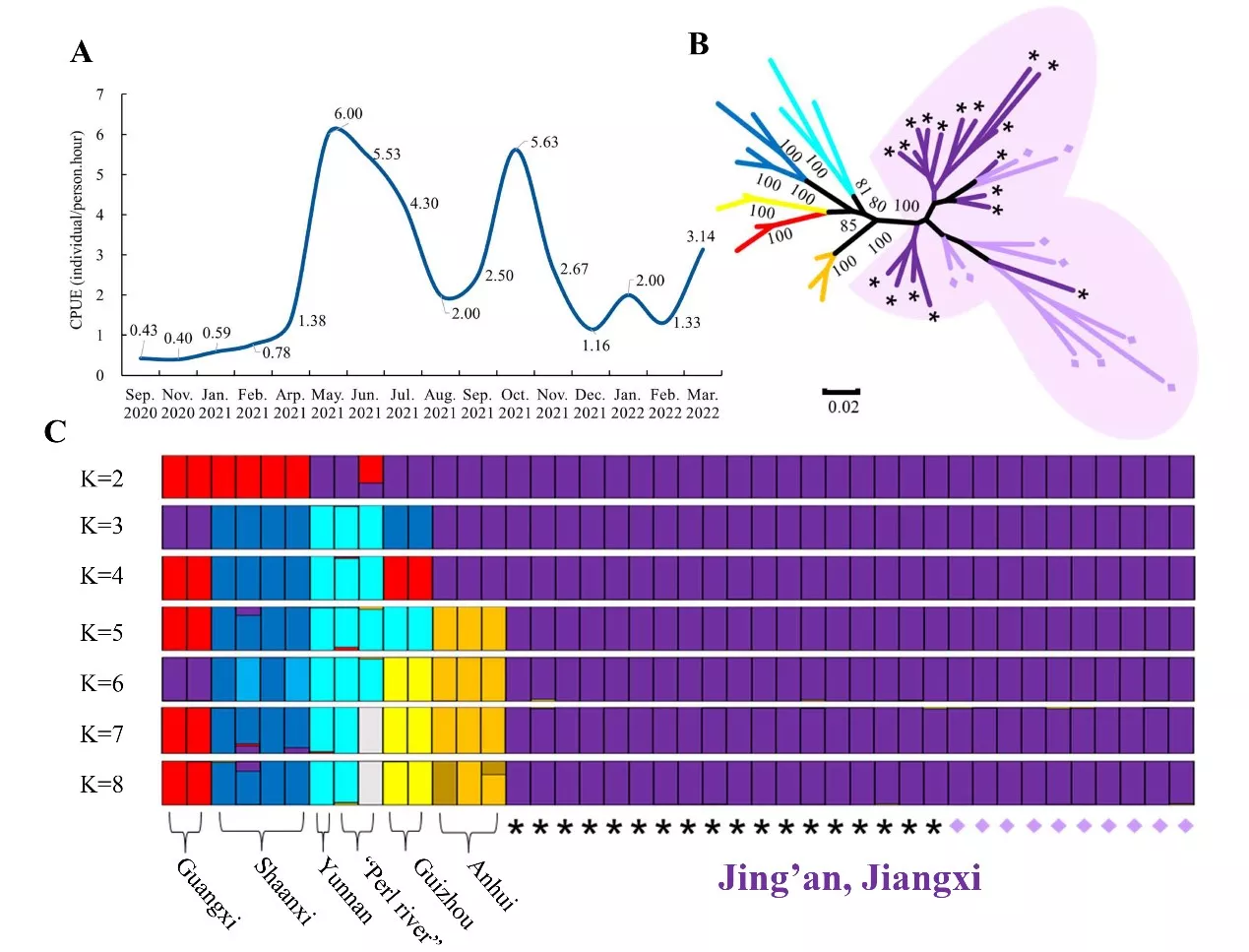The understanding and correct division of species population is the basis of endangered species protection. Conservation actions without scientific understanding and guidance may accelerate the extinction of species According to the investigation of Chinese scientists, it is difficult to find the wild pure natural population of giant salamander, but a large number of mixed individuals are hoarded in commercial farms
Science and Technology Daily reporter Wei Yichen
In other words, unscientific conservation actions may accelerate the extinction of small species that have not been recognized in the past. The protection of Chinese giant salamander is in great trouble. Therefore, finding the original population of giant salamander that is not polluted by hybridization, and then determining the distribution and endangered status of various species is the key to break through the current protection dilemma.

Fig. 1 Schematic diagram of field investigation area of Jiangxi giant salamander

Fig. 2 witness frequency and genetic analysis in field investigation
Good news today. After long-term unremitting efforts, a pure wild population of giant salamander was recently found in Jiangxi Jiulingshan National Nature Reserve by Kunming Institute of zoology, Chinese Academy of Sciences (Fig. 1). Based on the evidence of morphological and genetic differentiation, the researchers described it as a new species - Jiangxi giant salamander. Genome level data analysis supports that the population has significant genetic differentiation and is not polluted by hybridization of giant salamanders in other provinces and regions (Fig. 2). More than 700 individuals including adult, sub adult and newly hatched young salamander were recorded by marking recapture method for 18 months, and field reproduction was observed for two consecutive years. The witness frequency of adults and sub adults is as high as 2 tails / person · hour (Fig. 2), which is significantly higher than that outside the reserve (0.06 tails / person · hour), and even higher than that of Japanese giant salamander (0.83 tails / person · hour) and American giant salamander (0.45 tails / person · hour).
Researchers found that Jiangxi giant salamander is the first pure species of giant salamander with clear genetic identity and stable reproduction in the wild in China. At the same time, it is also the first wild population in China that can record the complete natural life history of giant salamander, which provides a valuable opportunity for systematic collection of basic biological and habitat ecological data of species. These basic research data are an important basis for assessing its endangered degree and formulating corresponding protection action plans.
It is reported that the current investigation shows that the giant salamander population in Jiangxi is an isolated population with a single point distribution. The water area of its habitat is only about 36K ㎡. In summer, the streams in the upper reaches of the habitat will experience short-term mountain torrents, and in winter, they are often cut off due to low water, resulting in the fragmentation of the habitat; The downstream is blocked by an artificial dam, and there is no suitable habitat for giant salamander. Therefore, this population may also become vulnerable due to factors such as small number, relative isolation and changes in habitat environment. It is urgent to establish corresponding protection action plans and carry out rescue protection.
In addition, through comprehensive investigation and comparative research, this study suggests that compared with the aquatic biological reserve usually set up in the scope of water area, if the nature reserve setting that can cover the whole mountain and water ecosystem can protect the wild population of giant salamander more effectively. At the same time, this study emphasizes the necessity of comprehensive field monitoring and population genome analysis to investigate the wild population of giant salamander and clarify its genetic identity. The study provides a reference and demonstration for those endangered species affected by human activities (such as human migration, overutilization, etc.) to formulate and adjust protection plans. On May 18, this achievement was published online in the Journal of zoological research.
The discovery of purebred Jiangxi giant salamander has brought hope for the protection of Chinese giant salamander. On this basis, further systematic field investigation will be carried out nationwide (focusing on protected areas), which is expected to find more similar purebred wild groups. On this basis, scientific and effective protection measures will be taken to avoid the extinction of some species before they are described.
(the picture of giant salamander was taken by Yi Murong, and other pictures were provided by the Institute of biological resources, Jiangxi Academy of Sciences)